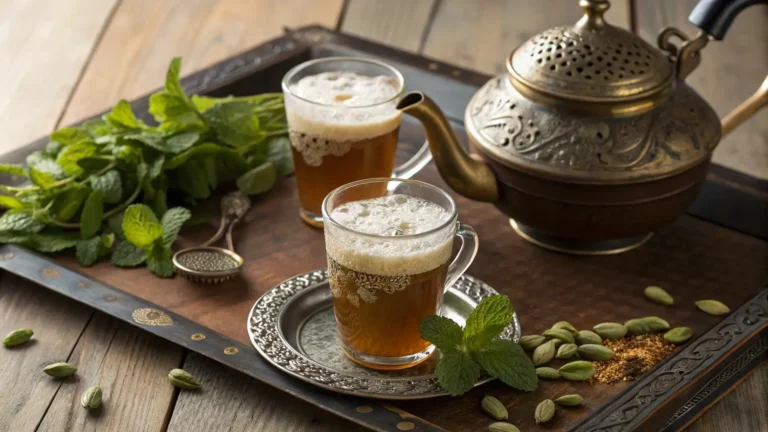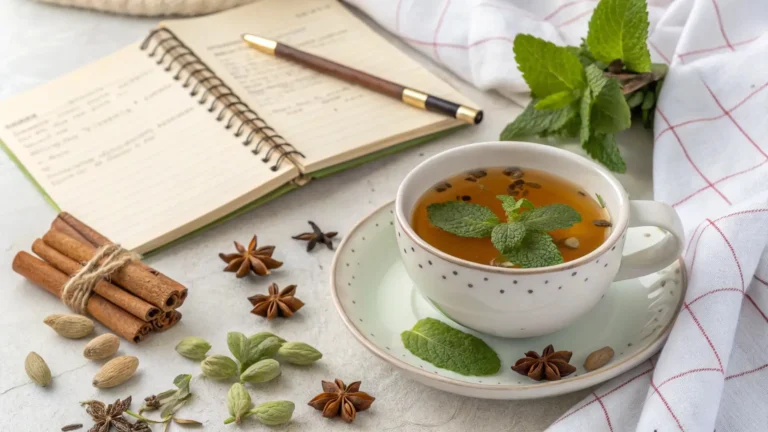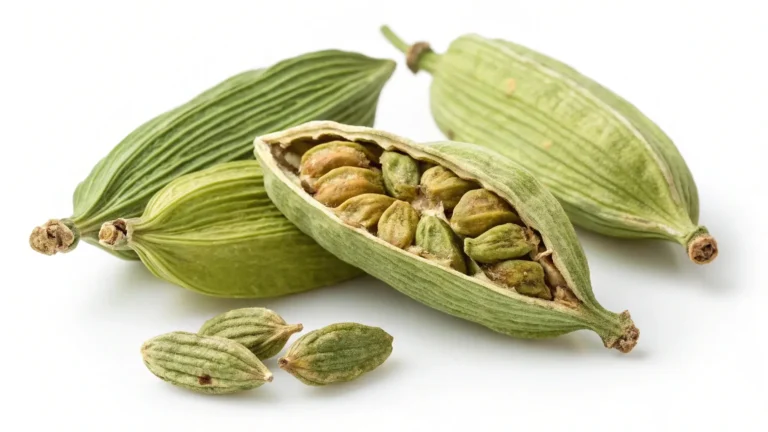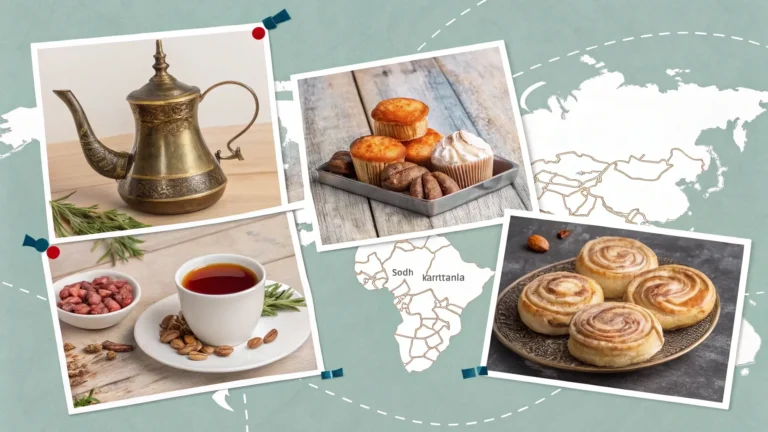Cardamom: A Mini-Guide to One of the World’s Most Magical Spices
The Bold Spice You’ve Been Overlooking
Cardamom often shows up in recipes without much explanation. Maybe it’s listed in your chai blend or tucked inside a spice rub you tried once. But let’s be honest—most people skip past it. Why? Because they’re not quite sure what this bold, floral note actually does. Is it sweet? Spicy? More for dessert… or dinner?
Here’s the truth: this spice is one of the most underrated flavor weapons in Western kitchens. Its roots stretch back further than the Silk Road, and its taste dances somewhere between eucalyptus and citrus—with just a whisper of warmth that lingers.
This guide is about discovering what makes Chef Bouchra’s Moroccan twist on this spice so unique. We’ll explore how it works, where it comes from, and how top chefs (and curious home cooks) are giving it a new spotlight. From cultural depth to pairing tips, there’s more to this ingredient than meets the eye.
Because once you use cardamom with intention, it doesn’t just sit in your spice rack—it takes center stage.
This post contains affiliate links. As an Amazon Associate, I earn from qualifying purchases.
Table of Contents
Recipe Details:
- Prep Time: 5 minutes
- Cook Time: 5 minutes
- Total Time: 10 minutes
- Servings: 2 Moroccan tea glasses (or 1 generous mug)
- Calories: ~35 kcal per serving
Nutrition Information (Per Serving):
| Nutrient | Amount |
|---|---|
| Calories | 35 kcal |
| Total Fat | 0g |
| Carbohydrates | 9g |
| Sugars | 8g |
| Protein | 0g |
| Fiber | <1g |
| Sodium | 1mg |
Values based on 2 teaspoons sugar. Adjust based on sweetener or modifications.
Cardamom Discovery — Chef Bouchra Louarde Moroccan Twist from Marrakech to Minneapolis

For years, I believed I had mastered the language of spices.
As a Moroccan chef working between Casablanca and Marrakech, I cooked daily with cinnamon in tea, ginger in harira, turmeric in tagines, and the deep, layered blend of ras el hanout. But cardamom? It sat on my shelf for years—unopened, unexplored.
Until one rainy afternoon in Marrakech, it called to me.
I was preparing traditional Moroccan mint tea for a small gathering. But it felt too predictable. I reached for the spice rack and stopped at a jar of green pods—the kind I’d seen in shops, but never used. Something told me: try it.
I cracked two pods gently, dropped them into the teapot with the green tea and mint, and let it infuse. The scent hit me first: bright, citrusy, soft. When I took that first sip… I paused. It was familiar but elevated. Like my childhood tea had learned a new dialect.
Moroccan Cardamom Mint Tea — Chef Bouchra’s Personal Recipe
- 1 tablespoon loose green tea (preferably Chinese Gunpowder)
- 10–12 fresh mint leaves
- 2–3 green pods, gently cracked
- 500 ml freshly boiled water (17 fl oz)
- 2–3 teaspoons sugar (or to taste)
Instructions:
- In a teapot, combine green tea and pods with boiling water.
- Steep for 3–4 minutes. Add mint and sugar.
- Infuse for 1 more minute. Pour high into glasses for foam.
Yields: 2 Moroccan-style servings or 1 generous cup.
Want to try it for yourself?
Grab the same pods Chef Bouchra uses here
Why This Moroccan Twist Works
This spice doesn’t overpower—it lifts. It brings a quiet elegance, making mint tea feel slightly luxurious, yet deeply rooted. Even my children, raised between Morocco and the West, noticed the difference. “It tastes like mint tea with a secret,” they said. That says it all.
Can It Work in Other Moroccan Dishes?
Yes—if you’re careful. I’ve since used this ingredient in rice, desserts, even couscous broth. It’s not traditional, but it fits. Like saffron or orange blossom, it only takes a pinch to make a moment memorable.out. It whispers. But when it whispers, you listen.
Cardamom in Cooking — Sweet & Savory Pairings You Didn’t Expect
If you’ve always thought cardamom was just for tea or curry, you’re in for a flavorful surprise. This bold little pod is a culinary shapeshifter—thriving in both sweet treats and hearty meals. It doesn’t just season food—it transforms it.
Start with the basics: the green variety delivers a bright, citrusy aroma with hints of eucalyptus and herbs. It brings perfume-like depth to baked goods, from Scandinavian sweet buns to Middle Eastern cookies like maamoul. Even something as simple as banana bread takes on new life with Chef Bouchra’s Moroccan twist.
And in drinks? A crushed pod in your morning coffee or hot chocolate can elevate it from average to café-level. Especially with dark chocolate—this spice adds complexity that lingers long after the last sip.
Beyond Dessert — How This Spice Elevates Savory Dishes
When it comes to savory meals, it’s time to introduce the black variety. Smokier and earthier, it adds real depth to lentil stews, slow-cooked meats, and aromatic rice. It blends effortlessly with warming spices like cinnamon, cloves, or cumin.
Try these ideas:
- Drop a pod into butternut squash soup for a floral-sweet edge.
- Mix it with rice pilaf and dried fruits—perfect with roast lamb.
- Whisk a pinch into a vinaigrette for roasted root veggies.
Can You Bake With It?
Absolutely. Cardamom pairs beautifully with apples, pears, berries—even in granola or frosting. It’s a baking essential in many global kitchens. But keep it balanced: a little goes a long way.g way. Ground cardamom is potent, and too much can overwhelm.
Cardamom Health Benefits — More Than Just a Feel-Good Flavor

As a chef, I don’t reach for ingredients because they’re healthy—I choose them for how they make people feel. But over time, I noticed that cardamom does more than add depth to food. It quietly helps the body, too.
In my kitchen, especially after rich meals, I’d sip mint tea with a crushed pod or two. The difference was real—less bloating, smoother digestion. At first, I thought it was timing. But during Ramadan, or after heavy tagines with prunes and lamb, this aromatic pod became my little post-meal secret.
Healthline – Cardamom: 11 Science-Backed Health Benefits
What Science Says (And What Generations Already Knew)
Modern studies support what traditional cooks have practiced for centuries. This spice has been explored for its potential to:
- Ease digestion: reduce gas and stomach discomfort
- Support oral freshness and hygiene
- Promote healthy blood pressure and circulation
- Fight inflammation thanks to antioxidant-rich oils like cineole
It’s no magic bullet, but when used as part of your cooking routine—not a pill—it carries quiet, lasting value.
WebMD – Health Benefits of Cardamom
A Small Ritual That Stays With You
Today, cardamom is part of my rhythm. In tea. In oatmeal. In warm milk before bed. It’s become a calming ritual—something between indulgence and self-care.
What I love most? It never feels medicinal. It feels like comfort.
Can You Use It Every Day?
Yes—culinary amounts are perfectly safe. A couple of pods in a pot of tea, or a small pinch in food, is more than enough. But moderation matters. Like saffron, too much can dull the charm.
Cardamom Storage, Dosage & Buying Tips — Get the Most From This Bold Spice

As a chef, I’ve learned that freshness isn’t a luxury—it’s essential. And when it comes to cardamom, that truth couldn’t be clearer. I still remember the first time I bought the ground version from a big-name grocery store in the U.S. It looked fine. But smelled like… nothing. Just dust.
The magic? It lives in the pod.
When I switched to whole green pods and crushed them gently before use, everything changed. My tea became richer. My cookies had this soft, citrusy whisper I couldn’t replicate with pre-ground powder. Same ingredient—completely different story.
Whole vs. Ground — What You Really Need to Know
- Whole pods are ideal for teas, coffees, rice, and slow-cooked dishes. They lock in essential oils and stay fresh for months when stored properly.
- Ground form is best for baking but fades fast—usually within 2–3 months. Keep it airtight, cool, and away from light.
My personal rule? Use pods when aroma matters. Ground when it blends invisibly.
How Much to Use?
This botanical is bold—you don’t need much.
Quick guide:
- Tea (2 servings): 2–3 pods, gently crushed
- Stew or pilaf (4 servings): 1–2 pods
- Baking: ¼ to ½ teaspoon ground
Start small. Let the flavor build, not dominate.
Where to Find Quality
Not all spice jars are created equal. If you’re in the U.S., skip supermarket brands. Look for Middle Eastern shops or reliable online stores that list origin and harvest dates.
Need a shortcut?
Get the same pods Chef Bouchra swears by — fragrant, whole, and beautifully sealed.
One last tip: store your green pods in a glass jar, away from heat and light. Respect them—and they’ll elevate every dish.
Cardamom Misconceptions — Common Mistakes You’ll Want to Avoid
For such a tiny seed, cardamom causes a lot of confusion in the kitchen. Over the years, I’ve watched countless cooks—both pros and beginners—make the same errors. Sometimes it’s too much, other times it’s misplaced. This spice is subtle, and treating it carelessly can backfire.
Let’s clear the air.
Mistake #1 — Treating It Like Cinnamon
This spice isn’t cinnamon. It doesn’t blend quietly in the background. It’s bold, citrusy, and slightly herbal. If you overuse it, the result can turn medicinal—especially in delicate desserts.
Tip: Start small. Let it introduce itself.
Mistake #2 — Storing the Powder for Too Long
Ground versions lose their aroma fast. That dusty jar in the back of your cabinet? It’s probably flavorless by now. Always go for pods when you can, and crush them fresh when aroma matters.
Mistake #3 — Mixing Up Green and Black
Green pods are light, floral, and ideal for sweets and teas. The black kind is smoky—best for savory dishes. Confuse the two, and you might ruin your recipe.
Misconception — “It’s Not a Moroccan Spice”
While not traditional, cardamom is gaining a place in modern Moroccan kitchens—especially with chefs like me who explore fusion. Like rose water or saffron, it takes just a pinch to elevate a dish.
Rule of thumb: Ground = short-term. Pods = long-term love.
Mistake #3 — Treating Green and Black Cardamom as the Same
This one is common even among seasoned cooks. Green cardamom is light, floral, almost sweet. Black cardamom is smoky, earthy, bold. They don’t swap one-for-one. Using black cardamom in dessert? That’s a fast track to a ruined cake.
Tip: Use green in sweet or delicate recipes. Save black for slow, savory dishes.
Misconception — “Cardamom Isn’t Moroccan”
True—it’s not traditional in the Moroccan spice canon. But like saffron or rose water, it’s been used selectively and creatively across North Africa. As chefs and home cooks, we evolve. We blend. We borrow.
And sometimes, the spices we thought didn’t belong… become the ones we can’t live without.
Cardamom’s Global Identity — From Morocco to the World

Growing up in Morocco, our spice shelves were already a symphony: cumin, turmeric, paprika, ginger, saffron, cloves… each had a role. But cardamom? It wasn’t part of the melody. If it appeared, it played a background note—soft, almost unnoticed.
But food evolves. And so do we.
As I began cooking for international guests and spent time abroad, I kept running into this botanical. In Swedish buns. In Arabic coffee. In Turkish confections. Even in cocktail menus in New York. Eventually… it found a home in my own kitchen.
A Spice With No Borders
This aromatic traveler has crossed cultures without losing its essence. It slips into Indian masalas, Scandinavian pastries, Middle Eastern desserts, and today’s global fusion plates. It’s not loud—but its presence is always felt.
A Moroccan Chef’s Reflection
For me, cardamom is no longer a stranger. It doesn’t replace Moroccan staples—it enhances them. Like adding a new instrument to a familiar song. In today’s kitchens, that kind of flexibility matters more than ever.
Sometimes, honoring tradition means knowing when to embrace something new.
Final Thoughts — A Tiny Pod with a Big Story
If there’s one thing I’ve learned as a chef—and as a mother—it’s that flavor holds memory. And cardamom? It’s the kind of flavor that sneaks into your senses and lingers long after the dish is gone.
It’s not just a spice. It’s a quiet signature. One that can take a simple tea and give it depth. A cookie and give it warmth. A dish and give it soul.
So whether you’re brewing a Moroccan mint tea with a twist, dusting cardamom into your next banana loaf, or just curious what the buzz is about—my advice is simple:
Try it. Slowly. Thoughtfully. And let it surprise you.
And if it becomes a staple in your kitchen, well… don’t say I didn’t warn you.
Have you cooked with cardamom before? Share your favorite use or ask Chef Bouchra your questions in the comments below!
Frequently Asked Questions About Cardamom
What does this spice taste like?
Imagine if citrus, mint, and a hint of ginger had a quiet, elegant conversation. That’s the essence of this aromatic pod. Green versions are light and floral, while the black kind leans smoky and bold. Subtle—but unforgettable.
Can I use it in both sweet and savory dishes?
Absolutely. This botanical bridges both worlds with ease. Infuse it into cookies, cakes, rice, stews, or even roasted veggies. Start small and adjust to your palate.
Is it considered healthy?
Yes, when used in food. This spice is traditionally linked to better digestion, fresher breath, and reduced inflammation. It’s not a medicine—but it adds comfort and wellness to your cooking.
Can I grind it myself?
Definitely. Fresh grinding enhances the flavor profile noticeably. Use a spice grinder or mortar and pestle, and only prepare what you need. It fades fast once powdered.
Disclaimer: This content is intended for informational purposes only and should not be considered a substitute for professional medical advice, diagnosis, or treatment. Always seek the guidance of a qualified healthcare provider with any questions you may have regarding a medical condition.
Tell us about your experiences!
There are no reviews yet. Be the first one to write one.

